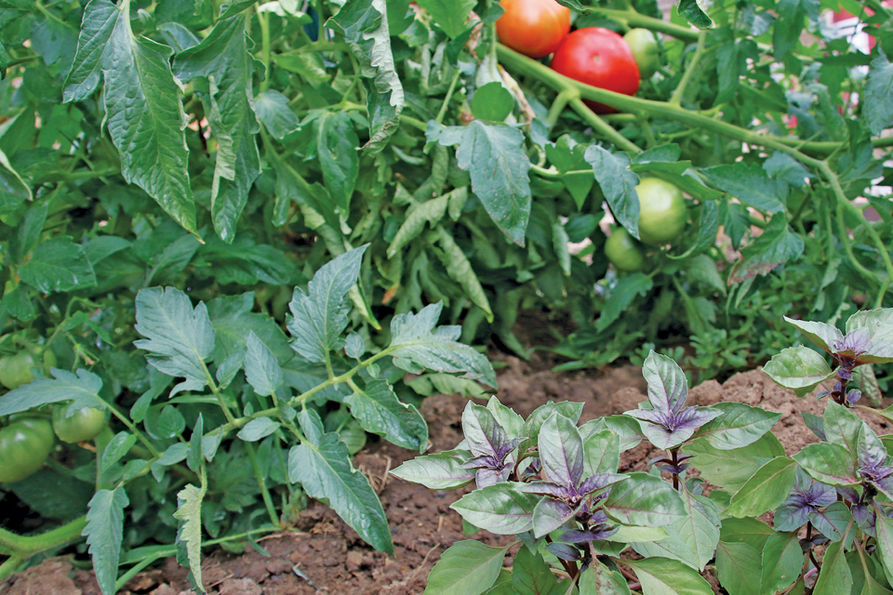
Plant basil near your tomatoes and they’ll not only taste richer, but basil will repel tomato worms. Plant radishes near spinach and they’ll attract the destructive leafminer to their greenery and away from the spinach.
Positive influence
Arranging your garden so that certain plants can benefit others when they’re planted together is called companion planting, which maximizes space while controlling pests and creating healthy soil.
Certain plants have a positive influence on their neighboring plants by repelling each other’s pests, feeding the soil or protecting them from the sun. They must, however, have similar soil, nutrient and water needs.
For example, peas, beans and clover produce usable nitrogen, which helps feed their neighbors. Carrots and leeks, when planted together, repel each other’s pets. And strong-smelling vegetables and herbs, such as onions, chives and garlic provide a good disguise to protect greens from pests that locate their food by smell.
Negative influence
Conversely, some plant combinations don’t work as well because their chemical makeup may inhibit the other’s growth or their root systems may compete for moisture or nutrients.
For example, keep corn and tomatoes apart because corn attracts a worm that also feasts on tomatoes; dill will stunt carrots’ growth; and beans won’t do well near any member of the onion family, such as garlic, chives or shallots.

